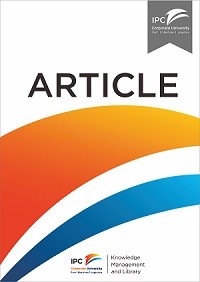Article
ICT adoption in multimodal transport sites: Investigating institutional-related influences in international seaports terminals
Seaports represent a major component of multimodal transport networks and they are key in the operation of supply chains and global logistics. In multimodal transport networks it is well acknowledged the use of information and communication technology (ICT) can deliver benefits that include real time track and trace, visibility and reduced lead-time, among others. Given the importance of the benefits associated to the adoption of ICT in the operation of multimodal transport networks, this work uses institutional-related theories in a multiple-case study comprising seven seaports terminals located in two continents. The purpose of the study is to identify key elements that affect and influence the adoption of ICT to support interoperability and connectivity in multi-modal seaport terminal operations. The analysis is used to identify groupings of influence linked to elements comprising institutional-related theories like coercion and mimesis, part of institutional isomorphism, among others. The study shows that both government legislation and dominant organizations running ports in various geographical locations exert great influence regarding ICT adoption policies in seaport terminals. The adoption of ICT has become important given the proliferation of technologies, the increasing need for track and trace capabilities and the economic impact of seaports terminals.
Ketersediaan
Informasi Detail
- Judul Seri
-
ICT adoption in multimodal transport sites
- No. Panggil
-
ATC LO MON i
- Penerbit
- Canada : Elsevier., 2017
- Deskripsi Fisik
-
20 p.
- Bahasa
-
English
- ISBN/ISSN
-
-
- Klasifikasi
-
LO
- Tipe Isi
-
-
- Tipe Media
-
-
- Tipe Pembawa
-
online resource
- Edisi
-
2017
- Subjek
- Info Detail Spesifik
-
-
- Pernyataan Tanggungjawab
-
Adrian E. Coronado Mondragon
Versi lain/terkait
Lampiran Berkas
Komentar
Anda harus masuk sebelum memberikan komentar

 Karya Umum
Karya Umum  Filsafat
Filsafat  Agama
Agama  Ilmu-ilmu Sosial
Ilmu-ilmu Sosial  Bahasa
Bahasa  Ilmu-ilmu Murni
Ilmu-ilmu Murni  Ilmu-ilmu Terapan
Ilmu-ilmu Terapan  Kesenian, Hiburan, dan Olahraga
Kesenian, Hiburan, dan Olahraga  Kesusastraan
Kesusastraan  Geografi dan Sejarah
Geografi dan Sejarah